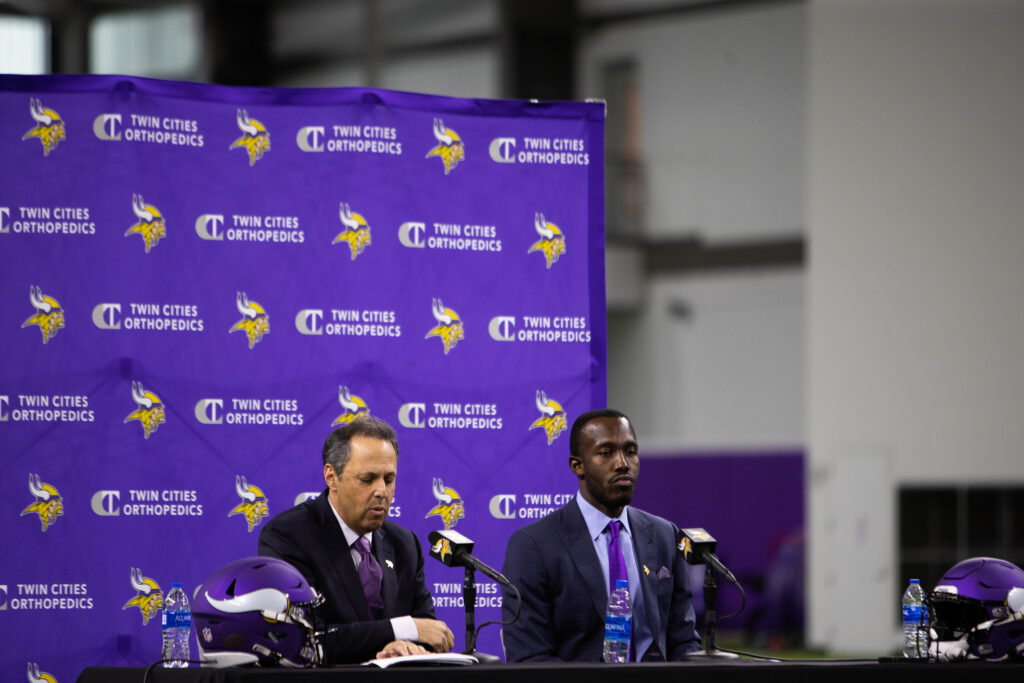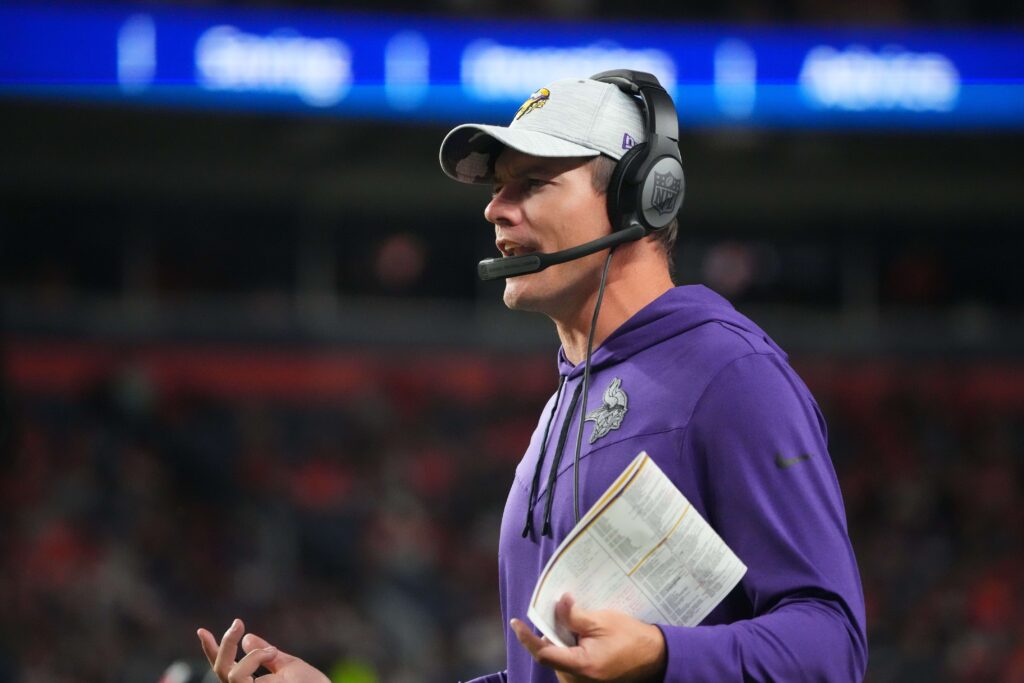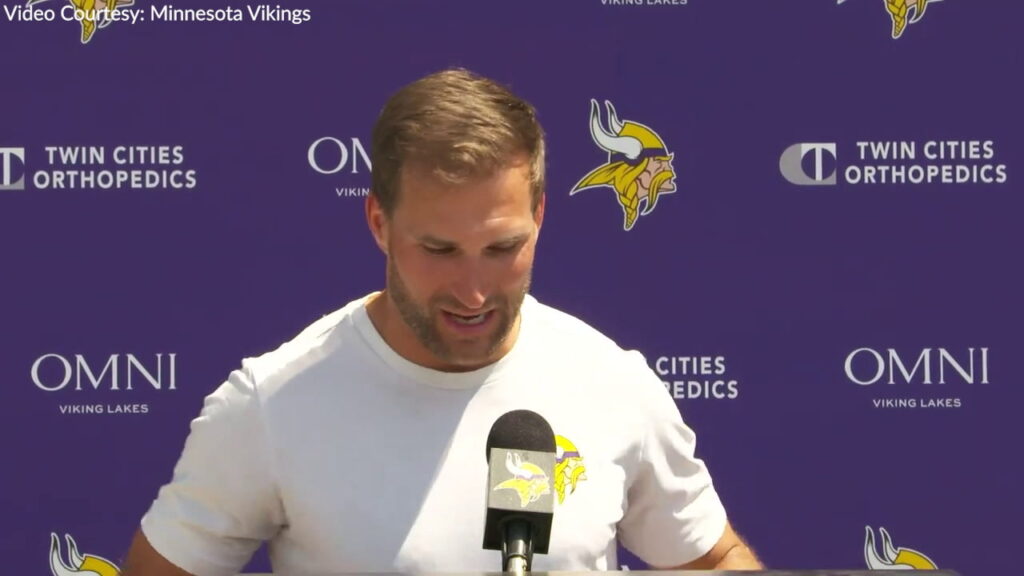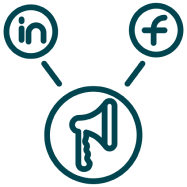In Season 8 of The Simpsons, there’s an episode where the Itchy and Scratchy Show has gone stale and Krusty The Clown meets with the network and writers to figure out what they want they want in a new character.
The network executive suggests adding an edgy, in-your-face dog named Poochie.
“So he’s proactive, huh?” Krusty asks.
“Oh God yes, we’re talking about a totally outrageous paradigm,” the network exec responds.
A writer pipes up:
“‘Proactive’ and ‘paradigm,’ aren’t these just buzzwords that dumb people use to sound important? Not that I’m accusing you of anything like that. [pause] I’m fired, aren’t I?”
If you watched Kwesi Adofo-Mensah’s opening press conference and were reminded of that scene, well, that means you watched just as much of The Simpsons as I did and things from 1997 are not as different from today as we’d like to think. It also means you got the joke. Talk of “collaboration” and “consensus building” sound like they are straight from a corporate executive training VHS tape, not a path to a Super Bowl parade. Sure, it’s not much different than an old school football man talking about being tough and hard-nosed but those concepts are less esoteric than the Princeton version. We can all visualize what it means for a football team to be tough. It’s much harder to picture how charts and group meetings will pull the Minnesota Vikings from the entrenchment of mediocrity. Biting kneecaps, now that pops.
So maybe we can use regular words to get to the bottom of what it really means to have Adofo-Mensah leading a front office with an analytical mindset.
One place to start is that the Vikings simply have someone in charge with a very different background from anyone else who has ever been the top decision maker for an NFL franchise.
“The Vikings made a potentially league-changing decision,” Pro Football Focus cap expert Brad Spielberger said on the Purple Insider podcast. “I don’t want to overstep it and be too dramatic but that’s the reality of the situation.”
While Adofo-Mensah would rather be called a Space Cowboy than “analytics guy,” being different in the NFL has often paid off.
In his opening press conference, the Vikings’ new general manager expressed his appreciation for Bill Walsh. The same Bill Walsh who created one of the league’s first quick-passing systems in 1970 with Cincinnati while the rest of the league lived by the credo that passing too much was a recipe for disaster. At that time the league was all about running and deep throws. Walsh focused on his QB’s timing, footwork and creating yards after catch. When applied in San Francisco with Joe Montana and Jerry Rice, it created a dynasty. Walsh was also known for moving on from proven veteran players before their decline.
A Wall Street background doesn’t guarantee Adofo-Mensah success but it has a chance to add a layer that goes beyond convention. Rooting a front office in analytics isn’t just about making decisions based on research. Any team in the NFL can ask their research department to figure out whether it’s a good idea to spend a sixth-round draft pick on a punter. Taking research to the next level is about finding ways to be creative.
“[Adofo-Mensah] is not tethered to one ideology,” Spielberger said. “I think that’s one thing that gets lost with ‘analytics’ is, the thing we all agree on is that you should look at a problem from every single possible angle and that is the best way to arrive at the best decision. That’s what he’s going to do which means everyone’s voice in the building just got more valuable.”
Spielberger uses the example of some teams committing to sports science. The Vikings are among the teams that use tracking data to examine the workload of each player in practice and games. Mike Zimmer begrudgingly agreed to give veteran days at times when the data indicated he should but the Los Angeles Rams leaned fully into the numbers and began giving veterans more time off than any team in the league. They aren’t reinventing the wheel. They’re going outside of conventional thinking because they were creative with the numbers.
The hunt for edges is everywhere. But when you find them, you have to use them. The Vikings have done behavioral studies and modeled NFL Combine numbers to make player comparisons and predict success or failure. Whether those things were leaned upon when the team had a desperate positional need in recent years is hard to say.
Another example: Last year PFF studied a consensus draft board by The Athletic and found that teams who reached on players were more likely to fail with those picks than those who took players that were taken lower than expected. Meaning that taking top-15 prospect Christian Darrisaw at 23 is fine. Taking expected second-rounder Alex Leatherwood at 17 is risky.
There are advantages in where money is spent too. The league may have mastered how to manipulate the cap in short-term situations in order to keep all the players they drafted but it hasn’t completely figured out when and where to smartly spend its cap space.
“There’s only a handful of teams to my knowledge that has someone analyzing market value and is learning and trying to model the valuation for not just their own players but all the pending free agents and guys they’re going to go after and stuff like that,” Spielberger said.
On a call with the Twin Cities media following Adofo-Mensah’s hiring, Browns GM Andrew Berry described putting all these different ways of measuring things together like this:
“Using a variety of sources of information, weighing them accurately, which allows the decision maker in any space – whether it’s on roster decisions or game-day decisions or medical/performance decisions, contract-management decisions, you name it – to really make the best choice for the organization.”
Weighing them accurately is key.
“When you have a scout as your top guy, it has to be very hard if he has his own opinion on something to deviate from that,” Spielberger said.
That doesn’t mean folks with analytics backgrounds are impervious to thinking they have all of the answers.
“One lesson to learn from baseball is that we had this explosion of data and tech and all these coaches that went out there and the first wave of coaches was eager to confront the old way of doing things and they came in with all the data and tech and all the isms and buzzwords and eager to tell everybody how much they knew and how much the old way was wrong and so many of them came in and there was conflict,” baseball writer for The Athletic Eno Sarris told the Purple Insider podcast.
What baseball discovered along the way is: How players and people within an organization feel about their jobs is an important data point that can’t be ignored.
“We’re in this second wave now where people are realizing that culture matters…culture as in, are we kind to each other? Do we value each other’s opinion?” Sarris said. “And also a culture of making links to the players who you’re trying to coach. Actually listening to the players. Having them as a source of data and input…it’s not just what you know, it’s how you can get it across.”
Adofo-Mensah noted in his press conference that he was going to make phone calls to the team’s leadership council and start forming relationships with players as soon as possible. The Vikings saw the negative impacts in recent years of ignoring player input, whether it was Stefon Diggs forcing his way out because nobody would hear him out or Eric Kendricks calling the way the team was run “fear-based.”
This isn’t an episode of Undercover Boss where Adofo-Mensah pretends to be a tight end and learns along the way that it was the players’ feelings that matter most. It’s about finding improvements based on the feedback of the people who are catching passes and making tackles or doing studies and scouting players. In the 2019 Super Bowl, NFL Films captured Patrick Mahomes asking Andy Reid if he could run the wasp concept. Reid agreed and it turned into one of the greatest plays in Super Bowl history. Mike Holmgren said on his A Football Life documentary that he let Joe Montana pick his favorite passing concepts. Bruce Arians wrote in his book that all of his QBs got to select the third down plays.
Ironically, it’s an analytical concept to remember humans are still doing the work.
“The biggest thing is just making sure you establish a process by which all the voices can come to the table and all the most relevant perspectives can come to the table so that you ultimately can make the final decision,” Berry said.
Of course, there is not an Easy Button. Berry acknowledged that sometimes the GM simply has to pick a direction and go. So putting together an analytical front office doesn’t mean everybody is living in La La Land dancing around singing joyful tunes about their spreadsheets and scouting reports. It means having a flashlight when others are stumbling around in the dark and being imaginative when it comes to finding ways to see the spots that haven’t been illuminated yet.
“You find that the best decision making engines combine information that isn’t related to each other or even the thing you’re trying to find,” Adofo-Mensah said. “So what it’s really saying is you want information that covers the blind spots of the other things.”











